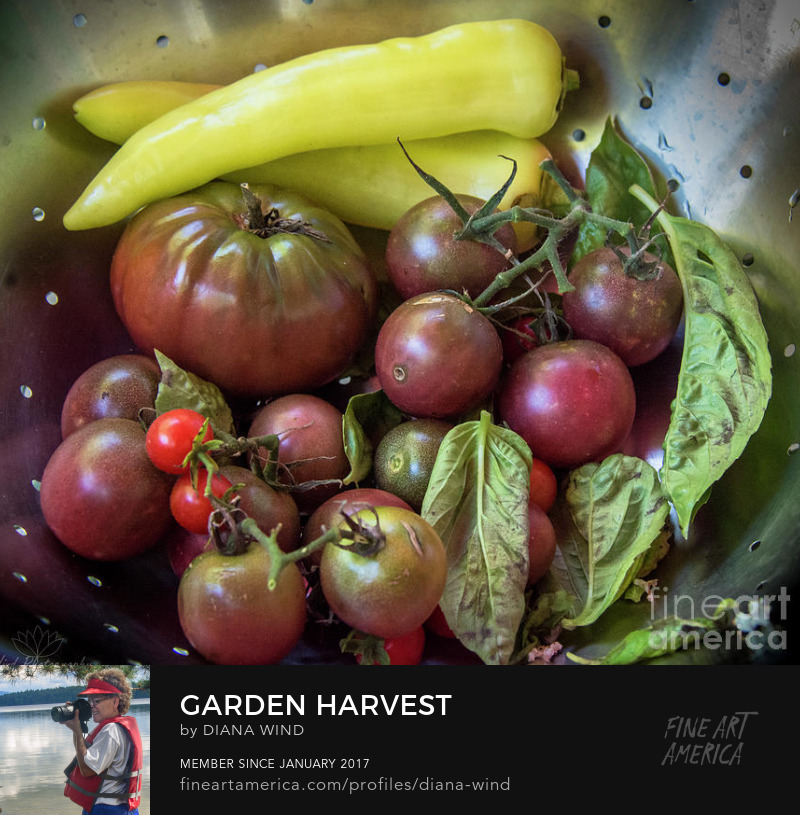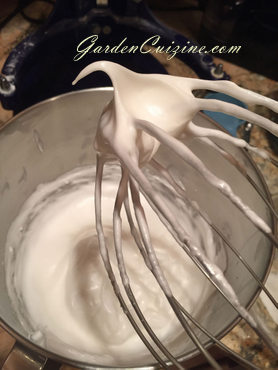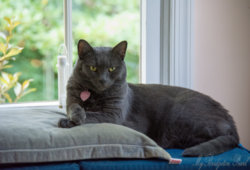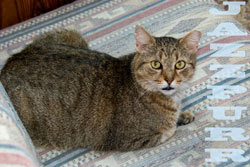Friday, September 27, 2019
Monarch Butterfly sighting in Mt. Laurel NJ in our backyard on Mexican Sunflowers!
Another adult Monarch Butterfly was seen on our Mexican Sunflowers this afternoon. I reported the sighting on JourneyNorth's statistics data collection. Report your sightings; citizen scientists make an important contribution to the understanding of monarchs and their incredible life cycle and migration.
We also refilled our hummingbird feeders today with fresh nectar. I wasn't sure if any hummingbirds were still around,,, they are! We had a female visiting at the red cannas that border our veggie garden just after refilling the feeders. So glad that I did.
Happy Gardening and Hummingbird and Monarch watching!
Grow a patch of Milkweed and Monarch butterflies will come.
Related Links
Amazing Year for Eastern Monarch Population
Blog post and photo Copyright (C)Wind. All rights reserved.
Monday, September 23, 2019
Nature photography on my Birthday! #gardencuizine where oyster harvesting made history
| photo by Diana Wind |
Discover Port Norris New Jersey
After the oyster industry crashed and most of the rich moved away, Port Norris, NJ became one of the the poorest areas in the state. But in terms of nature's riches, Port Norris wins the gold for the best sunsets, the best grasses and the best salt marshes.
The more times I visit Port Norris, the more I love it. We went last night to walk along the wetlands and photograph the sunset. We parked the car in the lot at Bayshore Center at Bivalve and walked over to the trails.
There are miles of walkways along parts of the 4,000 acres of restored wetlands. It's peaceful there. Only one other person passed us on our walk; he was riding a bike.
The grasses were taller than we remembered from our last visit with the Monarch Family Success Center group. We could hardly see the old oyster shack that Harry took a photo of the last time.
We walked along the path to the Maurice River and stopped to watch the birds catching fish. We decided the best area to photograph the sunset was closer to the largest observation platform. We walked back along the crushed shells.
The sky was blue and clear. Almost too clear for interesting photographs. Not a cloud in the sky - just birds, lots of birds. I can see why the area attracts bird enthusiasts. As the sun began to set, a warm glow spread across the entire salt marsh. As you can see, the sunset was breath taking.
Related Links
When Oyster Boats Ruled
Bayshore Center at Bivalve
Treasures of the Marshland
Oystering
Blog post and photograph Copyright (C)Wind. All rights reserved.
Wednesday, September 18, 2019
More Monarch Butterflies emerged in our NJ garden! #monarchmigration #gardenchat
Dorian was born! As the sun warmed the morning air, this beautiful Monarch butterfly crawled out of the chrysalis. Nearby, another beauty did too. Yes, two more adult Monarchs to join the 2019 Monarch migration.
Harry noticed that they literally hung out around their chrysalis' mid-morning for a few hours while their wings dried. Learning about the amazing life cycle of Monarch butterflies has been the highlight of our summer. Dorian took 15 days to eclose (emerge). All I can say is, plant Milkweed and they will come.
Happy Monarch Watching!
Photo and blog post Copyright (C)Wind. All rights reserved.
Friday, September 6, 2019
@monarchwatch @SaveOurMonarchs @journeynorthorg Our milkweed meadow monarch watch update #monarchbutterfly
Our Milkweed Meadow
Monarch Report
My last post talked about the many monarch caterpillars we have this summer thanks to allowing milkweed to grow in our front yard. In the USA, monarch butterfly populations have been declining rapidly due to habitat loss of mainly milkweed. Monarch butterflies need milkweed to survive. We grow it just for the monarchs.We love milkweed's pleasant fragrance; it's a native plant. And, you do not need a green thumb to grow it. Any homeowner can grow it. Ours grows in a small area that we don't mow or water - basically, a mini (pocket) meadow.
This morning I went out to look for a monarch caterpillar that I noticed Sept. 2nd, hanging under a milkweed leaf in the classic "J" shape - shown in the top photo. And, sure enough, the caterpillar must have shed it's skin soon after I saw it and produced an outer green protective, thimble-sized, pupa (chrysalis) in perfect form.
Wow! Super exciting to see; and, beautiful too. I never realized chrysalis have a sparkly gold band at the top. I also discovered another chrysalis hanging from a branch in a nearby shrub.
When metamorphosis is complete, a spectacular monarch butterfly will emerge and join the others in a captivating fall migration. These special, fourth generation, monarch butterflies live the longest. This generation of south-bound butterflies travel over 2,000 miles to their over-wintering destination high up in the mountains of Central Mexico. And, when winter is over, they turn around and fly back to the USA - absolutely an amazing journey.
Updates: 9/15/19- The good news is the chrysalis under the milkweed leaf is still hanging. The bad news is that the leaf is shriveling up and dying now and won't last much longer. ...Come on butterfly... come on!! I just saw a monarch butterfly, but it wasn't this one. I have been watching 2 other chrysalis too; 3 in all. The one in the sun on a shrub branch has beads of sweat on it and you can see the darker butterfly wings inside!
9/16/19- Guess What? Harry said the chrysalis on the shrub was dark in color this morning. By the time I got home from work, later in the day, the monarch was gone! The other 2, including the chrysalis on the dying milkweed leaf, have turned darker in color and look ready now too. My bet is sometime in the morning. I also saw another caterpillar! The Monarch life cycle is fascinating.
Related Links
Journey South
Monarch Butterflies Migrate 3,000 miles
Blog post and photos Copyright (C)Wind. All rights reserved.
Monday, September 2, 2019
@monarchwatch Success! Monarch caterpillars all over our milkweed meadow. Yay! #savethemonarchs
Our pocket meadow is proving to be a huge success! Harry's Meadow covers a small piece of our front lawn that we decided not to mow. With a little encouragement and select weeding, common milkweed is flourishing. Milkweed leaves are where monarch butterflies lay their eggs. When monarch caterpillars emerge, they are at the table of their only food source - milkweed.
A few weeks ago we enjoyed watching and photographing monarch butterflies. We have had a banner year for butterflies - more than ever! Some of the attraction may be that our yard now has many plants that are good nectar sources, including: Milkweed, Joe Pye weed, Echinacea, Liatris and Mexican Sunflowers.
A few weeks ago, monarch butterflies mated and laid their eggs. Now, we are seeing lots of monarch caterpillars (larvae stage) on the milkweed plants eating the leaves.
These feeding monarch caterpillars take 10-14 days to molt (5-stages) and grow before leaving the caterpillar larva stage.
After the larva stage comes the pupa stage, when their chrysalis hangs camouflaged somewhere. It takes another 10-14 days to develop into beautiful monarch butterflies. These late summer monarchs are the 4th generation that join the monarch migration to over-winter in Central Mexico!
Our meadow didn't start out as all milkweed. The area has been invaded by Mugwort (Artemisia vulgaris), an undesirable, invasive weed. We continue to pull it out to make room for milkweed to spread.
Along with monarch caterpillars we also have lots of orange milkweed bugs. We decided to leave the bugs alone and let them do their thing. They seem to be coexisting on the milkweed plants along with the feasting caterpillars. Yesterday, I stopped counting at 11 caterpillars and one monarch butterfly!
I have been looking around the meadow for where the caterpillars may go to form their monarch chrysalis for metamorphosis. I noticed a caterpillar hanging straight down from a dying Queen Anne's lace plant. Could this be the chrysalis spot for that caterpillar?
In searching for more information I came across the links below that I found helpful. And, I joined and reported our sightings on Journey North.
Happy Gardening and Monarch Watching!
Related Links
Monarch Life Cycle
Monarch Biology
Advocate to your elected officials
update 9/2/19: the hanging caterpillar from the Queen Anne's lace plant was dead. Not sure what killed it. The good news is that today I did spot a live monarch caterpillar going into the pupa stage underneath a milkweed leaf.
Blog post and photos Copyright (C)Wind. All rights reserved.Top photo of monarch caterpillar on leaf edge was also posted on Journey North who was given permission for use.
Subscribe to:
Posts (Atom)
























